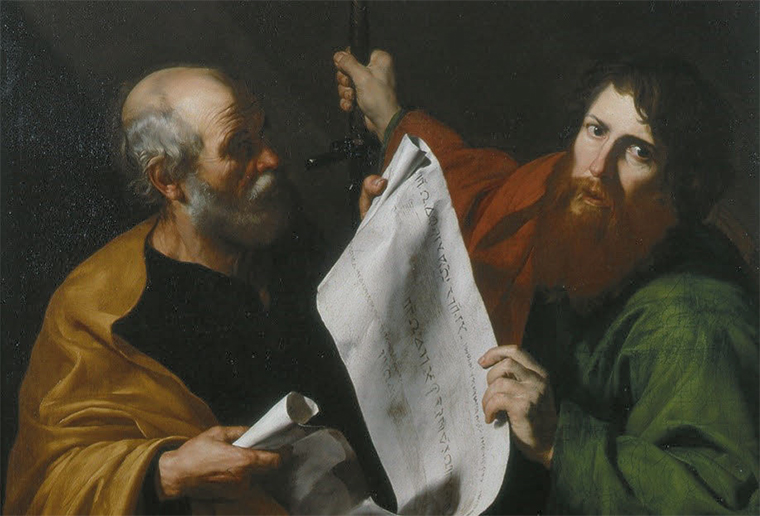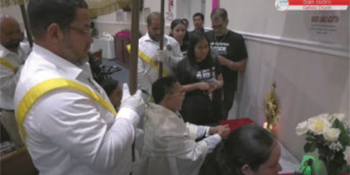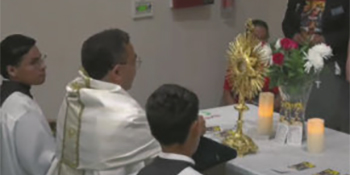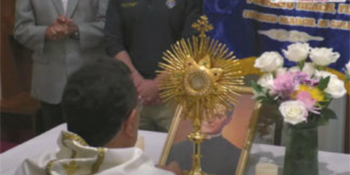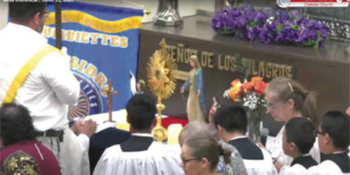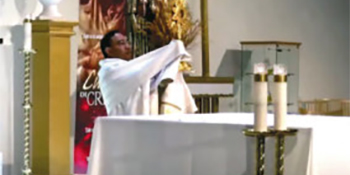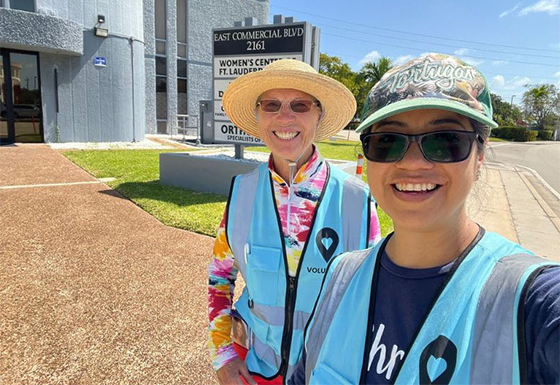Celebramos hoy, al mismo tiempo,
la fiesta de san Pedro y san Pablo.
Ellos colaboraron para la
construcción del Reino de Dios.
Dieron testimonio del Evangelio con
su propia vida. Todos sabemos que,
en las horas de la pasión, San Pedro
negó a Cristo. Por su parte, san
Pablo, antes de ser llamado a ser
apóstol, fue perseguidor de los
cristianos. Pedro se arrepintió y
llegó a ser el primer Papa, murió
mártir. Pablo, convertido al
cristianismo, fue fiel seguidor y
propagador del Evangelio y también
fue mártir.
¿En qué imitas a estos
grandes seguidores de Jesucristo?
“Jesús asigna a Simón este nuevo
nombre: ‘Pedro’, que en la lengua de
Jesús suena Kefa, una palabra que
significa roca. En la Biblia, este
término, roca, se refiere a Dios. Jesús
lo asigna a Simón no por sus
cualidades o sus méritos humanos,
sino por su fe genuina y firme, que
les ha dado de lo alto. La gloriosa herencia de Pedro y Pablo es una
llamada a vivir las virtudes
cristianas, de modo particular la fe y
la caridad.
La fe en Jesús: como
Mesías e Hijo de Dios, que Pedro
profesó primero y que Pablo anunció
a la gente; y la caridad, que la iglesia
está llamada a servir con horizonte
universal” (Papa Francisco).
La
historia de estos apóstoles no fue
fácil; tuvieron muchas dificultades.
Sin embargo, son los cimientos de
nuestra Iglesia. Cada uno de ellos
fue único y se dejó tocar por Jesús.
Pidamos hoy ser rocas firmes en
nuestra fe, y caminemos con
esperanza a pesar de las
dificultades, teniendo la seguridad
de que Jesús va con nosotros.
Gospel Meditation
What do you call brothers who are
born on the same day?
Twins, of
course. That is what we celebrate
today in the inestimable saints, Peter
and Paul.
Wait: twins?
Yes. The early
Church believed that Peter and Paul
were martyred in Rome on the same
day. Since the day of martyrdom is
celebrated as a saints’ birth into
eternal life, the result is striking: Peter
and Paul are twins in God’s family, the
Church.
Who should care about this?
Well,
anyone who longs to live in a world
marked by love and peace.
Remember, the Romans believed that
twins, Romulus and Remus, founded
their city through an act of fratricide,
the former murdering the latter.
Sadly, the structures of this fallen
world emerge through violence
between those who should love each
other. But in the Church, a new city
has been founded upon this new set
of twins, embodying the non-violent
power of Jesus’ cross and
resurrection.
That’s why traditional icons represent
Peter and Paul in a fraternal and
warm embrace. Contrasted with the
violence of Rome’s founders, it
challenges us with a bold claim:
- Do we
believe that structures of merciful
love are more powerful and lasting
than those based on power, violence,
and domination?
- Am I willing to see
others in my life as my “twin,” with
whom I am called to give my life for
Christ, or as my rival?
- Am I committed
to living what is embodied in Romulus
and Remus, or in Peter and Paul?
— Father John Muir

